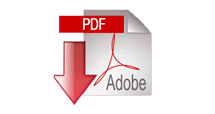In this lesson you will learn about the Four Paragraph Method and discover how it will ensure that your query letter provides all the information needed for an agent or publisher to make an informed decision about your book.
In the previous lesson we examined the role of the query letter. We learned that the overall aim of the letter was to ensure that an agent or publisher would clearly understand your book’s content, your book’s genre, your book’s readership, your book’s place in the market and your role as a writer. We discovered that providing this information would allow the agent/publisher to make a fair assessment of your book’s potential to be a commercial success.
Define your Book’s Genre and Demonstrate its Commercial Potential
Before we delve into the detail of the Four Paragraph Method I want to make one important point: the best possible outcome you can possibly expect from a query letter is for the agent/publisher to read your synopsis and extract. No matter how good your query letter turns out to be, no matter how detailed the information you present, and no matter how accurate the brief synopsis you include, the best you can hope for is for the agent to NOT reject your proposal. No query letter has ever sealed a book deal. At the end of the day it is the quality of your book (or more accurately its commercial potential) that will sway the agent/publisher. This said, the query letter is the first essential step to that elusive yes!
On the first reading of your query letter the agent/publisher is really only asking two questions:
Will this book fit into the genre I represent/publish?
Does this book have the commercial potential to make a profit?
Notice there is no question about quality of writing or complexity of narrative, nor the realism of your characters. At this earliest stage it’s commercial considerations, not plot considerations, that are uppermost in the agent/publisher’s mind. This means that your query letter MUST address these two questions. If you fail to answer the questions, you leave the agent/publisher the easy option of simply rejecting your book. They are busy, they see hundreds of books, why would they go to the trouble of reading your synopsis and extract, only to find the book is of the wrong genre? If you fail to accurately define your book’s genre or demonstrate its commercial potential, agents/publisher will find it easy to say no!
The Four Paragraph Method
I am a working writer, and the query letter is an essential tool in my tool box. The reality is that if I can’t write a book proposal I don’t get work and I have to stop writing. Over the years I have experimented and refined my query letter style, finally developing the Four Paragraph Method. this technique has proved to be a powerful and effective way to write query letters that provide agents/publishers with all the information they require. These four simple paragraphs will not only answer the two questions highlighted above, but also give the agent/publisher an insight into your book’s content and your role as the writer.
The structure of the four paragraphs is as follows:
- First Paragraph: This paragraph starts with your book’s tag line and gives your book’s elevator pitch.
- Second Paragraph: This section contains marketing and readership information including word count, genre and indication of competition.
- Third Paragraph: This is where you include a very brief synopsis.
- Fourth Paragraph: The final paragraph is where you will include your biography and any relevant writing experience.
Summary
- The best you can hope for from a query letter is for the agent/publisher to read your synopsis and extract.
- Define your book’s genre and demonstrate its commercial potential.
- Use the four paragraph method to ensure you provide agents/publishers with all the information they need.


